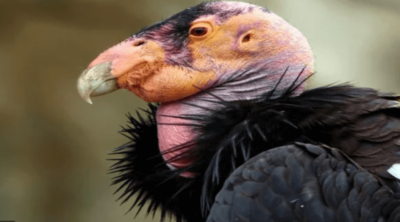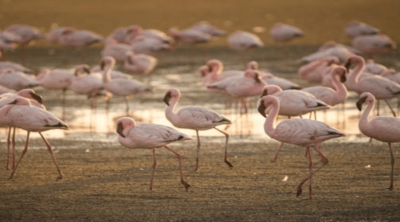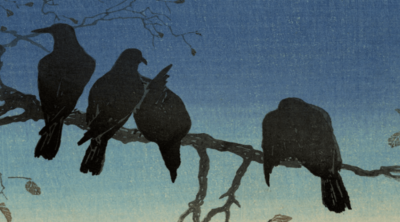
The Northern Hawk Owl is the only living species of its genus in the family Strigidae. Read this BirdEden post to find out the habitat, eating habits, conservation status, and other cool facts about this lone surviving member of the species.
A Different Kind
Unlike most owls, the Northern Hawk Owl is neither nocturnal, nor crepuscular; it is more active during the day, than it is during the night, dawn, or dusk.
The name of this owl couldn’t have been more appropriate, since it is said to resemble the Cooper’s Hawk (Accipiter cooperii) due to its physical appearance, which is mainly characterized by a long, tapered tail, and a small head. Its behavioral pattern too, maps that of hawks in more ways than one. This owl perches on branches atop tall trees, just like hawks do. While flying, it glides softly through the air without making fluttering sounds with its wings, again, just like the hawk. This species is sometimes also simply called the Hawk Owl.
This BirdEden article throws light on several facts about the Northern Hawk Owl, which include its scientific classification, distribution and habitat, physical appearance, hunting and diet patterns, way of communication, mating and reproduction cycle, conservation status, and its general behavior.
Scientific Classification
Kingdom: Animalia
Phylum: Chordata
Class: Aves
Order: Strigiformes
Family: Strigidae
Genus: Surnia
Species: S.ulula
Distribution and Habitat

Found mostly in North America and Eurasia, the Northern Hawk Owl can be spotted in regions spanning from Alaska to Siberia, and parts of Central Asia as well.
These owls are non-migrating birds that thrive within their breeding range. Most of their population is distributed throughout boreal forests. Their breeding habitat generally includes coniferous forests, and they live in deciduous trees like birch, larch, poplar, and willow. They mostly prefer perching atop branches of the spruce tree. These owls can generally be spotted in regions and areas which have meadows, clearings, burnt surroundings, swamps, and valleys.
Physical Appearance
It is relatively easy to identify a Northern Hawk Owl due to its characteristic physical appearance. It has a flat head, yellow eyes, and a yellow beak. Its facial features are mostly off-white or smoky-white in color, outlined by a grayish-black border. The color of the feathers and plumage of this species is mostly a darker shade of brown with a white underbelly, characterized by a spotting pattern. The most distinguishable feature is the black V-shaped pattern that develops on the back of its neck as it grows. Its broad and tapered tail, which is comparatively longer, is another feature which sets it apart from the rest of the owl species.
Like in most owl species, the females of this species are also bigger and heavier than their male counterparts. The female owl is generally 37-45 cm long and weighs 340 g. The male, on the other hand, is 36-43 cm long and weighs only 300 g.
Hunting and Diet
The Northern Hawk Owl is generally known to feed on small animals that include rodents as well as mammals of heavier stature, and other birds as well. Its primary diet includes voles (rodents resembling mice but smaller in size), which are available in abundance in the owl’s breeding habitat. Other animals that are preyed on by the owl are: lemmings, mice, birds like doves, sparrows, etc.
It is a diurnal hunter, and prefers hunting during the day more than in the night. It scours for its prey in barren lands, forest environment, or deforested areas. It is a search-oriented bird, and flees a site if it doesn’t find its prey there. The Northern Hawk owl possesses exceptional hearing, and can detect prey by its sounds one foot beneath the snow.
The way in which the owl devours its prey depends on the type of prey it hunts. If it hunts down larger mammals like the red squirrel, it starts by eating up their head first, followed by consuming the other organs (evisceration); the smaller prey is swallowed wholly by the owl.
Mating and Reproduction
The male, perched next to a potential nesting site, usually calls out to a potential female using a high-pitched sound that resembles a rolled whistle. The female responds with a shrill sound, and pairs up with the male. The female lays an average of 5-13 eggs per batch.
Initially, the eggs are incubated by the mother owl while the father owl hunts for food. But once the eggs have been hatched, the mother owl leaves the nest to hunt for food while the father owl guards the young owlets from predators. Approximately three to four weeks after being hatched, the owlets grow to a size which does not require the parents to watch out for them, and they fly off.
Subspecies
The three existing subspecies of this species are:
S. u. caparoch, which is a North American species, and is found in regions that range from Alaska to Newfoundland. This species is also spotted in states as far down south as Minnesota. It has also been very rarely spotted in the North American states of New York, West Virginia, and South Dakota. This occasional presence of this subspecies is mostly in winters, or when there is an abundance of prey.
S. u. tianschanica is a subspecies found mostly in Eurasia, spanning from Central Asia through to Xinjiang, in China.
S. u. ulula is a species also spotted mainly in Eurasia, mostly in regions of Siberia.
Conservation Status
It has been listed as ‘Least Concern’ by the IUCN Red List of Threatened Species. Official evaluation reveals that the population of this species, which is extremely large, follows a fluctuating pattern, but has never declined to a level which would be categorized as vulnerable or extinct.
Now that you know where and how to identify the Northern Hawk owl, the next time you go bird watching, keep an eye out for this bird too. You might just spot one!






